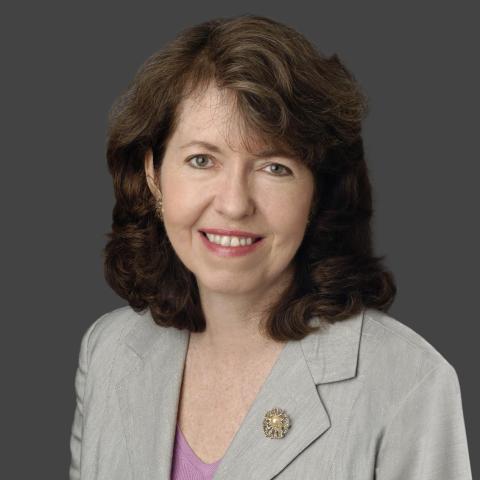Election Day has come and gone, and after one of the most divisive campaigns in memory, “healing” seems to be the word of the hour. What better time to begin than Thanksgiving, which Benjamin Franklin called a day of “public Felicity” to give thanks for our “full enjoyment of Liberty, civil and religious.” Thanksgiving, our nation’s oldest tradition, is a moment to focus on our blessings as Americans, on what unites us, not on what divides us.
Such was the case in 1863, when Abraham Lincoln called for a national Thanksgiving celebration. He did so at the urging of a farsighted magazine editor who believed that a Thanksgiving celebration would have a “deep moral influence” on the American character, helping to bring together the country, which was divided over the issue of slavery. Lincoln’s 1863 proclamation was the first in the unbroken string of annual Thanksgiving proclamations by every subsequent president. It is regarded as the beginning of our modern Thanksgiving holiday.
Lincoln’s call for a national Thanksgiving was different from the thanksgivings he or Jefferson Davis, the president of the Confederacy, had called in the early years of the Civil War to express gratitude to God for specific Union or Confederate military victories. Rather, in 1863 Lincoln asked Americans to give thanks for the nation’s general blessings. It was the first time since George Washington led the country that a president proclaimed a day of general Thanksgiving.
The opening sentence of Lincoln’s proclamation set the tone: “The year that is drawing toward its close has been filled with the blessings of fruitful fields and healthful skies,” he wrote. This was an astonishing way to characterize the year 1863, when death, suffering and grief were ever present. At the Battle of Gettysburg, which had taken place in July, the Union lost 27% of its fighting men and the Confederacy lost 37%.
Yet amid this human suffering, Lincoln cataloged the blessings for which Americans could be grateful. Even “in the midst of a civil war of unequaled magnitude and severity,” he wrote, the nation remained at peace with foreign countries, its borders were expanding, its population was growing, and its farms, industries and mines were producing.
Lincoln spoke not as commander in chief of the Union forces but as president of the entire nation, North and South. He made no reference to victories or losses or rebels or enemies. Instead, the president spoke of “the whole American people.” He called on every American to celebrate Thanksgiving “with one heart and one voice.”
To understand how Lincoln came to believe in the healing power of a national Thanksgiving, it is necessary to examine the remarkable life of the woman who made it happen. She used her position as editor of the most popular magazine of the pre-Civil War era to conduct a decadeslong campaign for a countrywide Thanksgiving holiday. She is often called the godmother of Thanksgiving. Her name was Sarah Josepha Hale.
Hale’s story is a classic American saga of how one enterprising, hardworking individual with a good idea can have an impact in an open, democratic society. In this case, a penniless young widow from New Hampshire—subject to all the limitations attached to such a station in life in the early 19th century—rose to become the editor of the most widely circulated magazine of her era, Godey’s Lady’s Book.
As editor—or “editress,” as she preferred to be addressed—Hale set out to publish American authors writing on American themes. This approach contrasted with that of other magazines of the day, which typically reprinted articles pirated from English publications. Hale lined up American writers such as Harriet Beecher Stowe, Nathaniel Hawthorne, Washington Irving and Edgar Allan Poe. Her interest in culture extended to everyday aspects of American life—food, fashion, manners, child rearing and running a household.
Thanksgiving Day, a homegrown holiday, fit into Hale’s mission of focusing on Americana. She saw it as a patriotic occasion along with the Fourth of July and Washington’s Birthday. Thanks in part to Hale’s campaign, by the time the Civil War began nearly every state marked its own Thanksgiving Day on dates ranging from September to December. Her goal was to have it established as a national holiday and observed on a uniform date throughout the country. George Washington had selected the last Thursday in November as the date of the first national Thanksgiving in 1789, so that was the date she chose.
Hale helped consolidate popular support for a national Thanksgiving by publishing editorials making the case for the holiday, fiction and poems set around Thanksgiving Day, and recipes for traditional Thanksgiving dishes such as roast turkey and pumpkin pie. Her hope wasn’t simply to see Americans feast on the same foods on the same day, but she was shrewd enough to realize that the culinary appeal of Thanksgiving was another selling point for her vision of a shared celebration.
Meanwhile, she conducted a letter-writing campaign, soliciting support for her project from presidents, governors, congressmen and other influential Americans. On Sept. 28, 1863, Hale sent a letter to Lincoln. The subject she wished to lay out before the president, she wrote, “is to have the day of our annual Thanksgiving made a National and fixed Union Festival.” The editor asked the president to “appeal to the Governors of all the States” to follow suit. “Thus the great Union Festival of America would be established.” The result, as we know, was Lincoln’s decision to declare a national day of Thanksgiving.
In his 1863 proclamation, Lincoln reminded Americans that the Civil War would eventually end. He asked them to look beyond the current horrors to a better day, when the country “is permitted to expect continuance of years with large increase of freedom.”
Lincoln’s Thanksgiving proclamation was profoundly hopeful, reminding the American people of the nation’s capacity for renewal. It’s a message that resonates today.
















